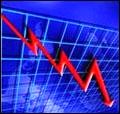 Last week the Fed announced a plan for the next financial crisis that feels to some observers like a plan to burn down the trading houses on Wall Street – or, alternately, guarantee another massive taxpayer bailout of the biggest banks.
Last week the Fed announced a plan for the next financial crisis that feels to some observers like a plan to burn down the trading houses on Wall Street – or, alternately, guarantee another massive taxpayer bailout of the biggest banks.
The Federal Reserve Board and its regional banks are overflowing with economists. What the Fed does not seem to have is an honest, informed voice to consult about how trading markets think in a severe financial crisis.
Last Tuesday, the Federal Reserve Board along with other bank regulators announced a new liquidity rule for the largest Wall Street banks – the ones that required the massive bailout in the 2008 to 2010 financial crisis. The goal of the new rule, according to the Fed, would be to force the biggest, most complex banks to hold enough ‘high quality liquid assets’ (HQLA) so that they could be easily liquidated if there was a run on the bank, eliminating the need for another taxpayer bailout. So far, so good.
Then the Fed and its fellow regulators did something that raises serious doubts about their market sophistication. They announced that in addition to U. S. Treasury securities, where a flight to safety always flows in a crisis, the big banks could also hold corporate bonds and corporate common stocks in the Russell 1000 index among their newly defined ‘high quality liquid assets’ earmarked for an emergency.
Just six weeks before the Fed anointed non-exchange traded corporate bonds as liquid assets, all the way down to investment grade, the Financial Times ran this opening paragraph in an article by Tracy Alloway:
‘The ease with which investors can trade corporate debt has declined sharply in the five years since the financial crisis according to research that is likely to feed fears over the prospect of an intensified sell-off in the $9.9 trillion US market.’
This post was published at Wall Street On Parade By Pam Martens and Russ Marte.

 Follow on Twitter
Follow on Twitter
Recent Comments